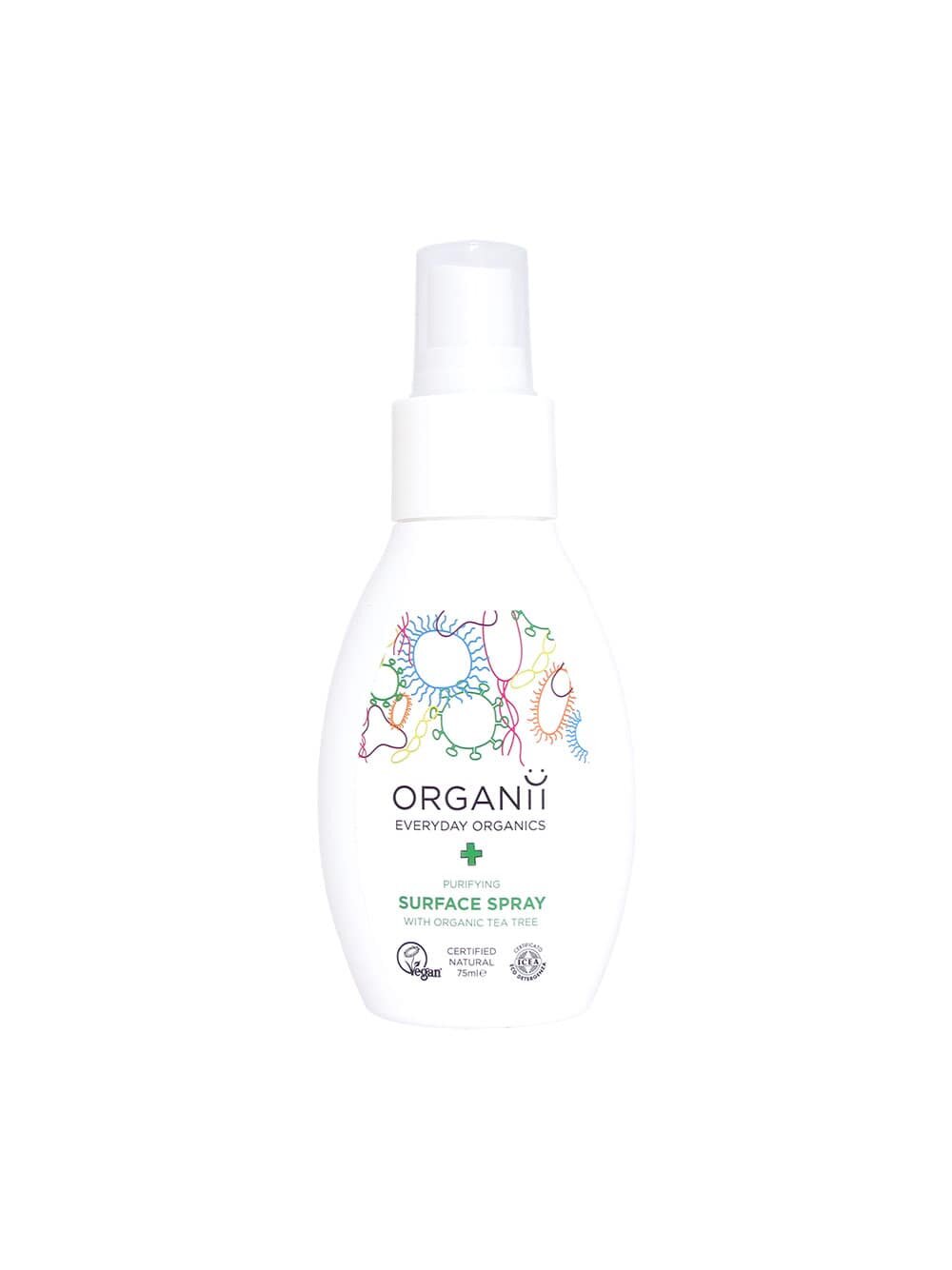3 Steps to help dry hands - 2/3.
Are your hands are drier than ever? After a year of frequent sanitising on top of the cold winter weather we are all feeling the effects so we have put together our top tips for keeping dry, cracked hands at bay all year round. In Part 2 of this 3 part series we will look at the drying effect hand sanitisers have on our skin and what we can do to minimise the damage.
2. Using a Hand Sanitiser with hydrating ingredients (along with at least 60% alcohol) helps to stop hands from over-drying.
For the last year most of us have been using more Hand Sanitiser than ever before and it’s taking a toll on all of our hands. Sanitisers have the primary function of removing bacterial and germs and, generally, include at least 60% alcohol (the amount recommended by the World Health Organisation) to do so. Naturally, alcohol is very drying but many sanitisers contain other ingredients that can dehydrate and irritate skin too.
We studied several of the most widely-available and well-known Hand Sanitisers on the UK market to see what ingredients were inside. Below we have listed 6 of the common ingredients that were in a range of the products we looked at, a break down of what these ingredients actually are and what effects each ingredient has on our skin.
Ingredients we avoid;
Propylene Glycol is usually used as a skin conditioning agent. It is obtained from the hydration of propylene oxide, which is derived from petroleum products. It is classified as a skin irritant and, concerningly considering it’s used in hand sanitiser, is also known to enhance penetration of the skin.
“Propylene glycol is a small organic alcohol commonly used as a skin conditioning agent. It has been associated with irritant and allergic contact dermatitis as well as contact urticaria in humans” - EWG
Triethanolamine is a strongly alkaline substance so it is normally used to adjust the pH of a product. It is made by reacting ethylene oxide (a flammable colourless gas) with aqueous ammonia (1 part nitrogen and 3 parts hydrogen dissolved in water to around 30%). There is strong evidence that is it both a human skin toxicant or allergen and a human immune and respiratory toxicant or allergen.
Benzophenone-3 is Oxybenzone, the same ingredient that is used in synthetic sun protection and has been banned in Hawaii, the Key West, the Virgin Islands, Aruba and other Caribbean islands due to environmental concerns. But what about the effects on our skin?
“Oxybenzone is a sunscreen ingredient associated with photoallergic reactions. This chemical absorbs through the skin in significant amounts. It contaminates the bodies of 97% of Americans according to research by the Centers for Disease Control and Prevention.” - EWG
Butylphenyl Methylpropional, also know as Lilial, is another known human toxicant and allergen with moderate to high toxicity concern in humans. Many countries are currently considering banning this ingredient due to risk of skin sensitisation, aggregate exposure and toxicity to reproduction
“Lilial (butylphenyl methylpropanal) is a synthetic scent ingredient; associated with allergies and contact dermatitis.” - EWG
We even found Synthetic Dyes in the Hand Gels we looked at, such as CI 14700, CI 17200, CI 19140 and CI 42090, which are produced from petroleum or coal tar sources. The problem with Synthetic Dyes, other than their source, is that each one can be made up of up to 50 synthetic colours mixed together and they are allergenic and sensitising to the skin causing reactions such as rashes or inflamed skin.
Parfum - just like we discussed in part one of this series, the main issue with fragrance in cosmetics is that the precise ingredients are ‘commercially sensitive’ and will not be listed in any ingredients list.
“The word "fragrance" or "parfum" on the product label represents an undisclosed mixture of various scent chemicals and ingredients used as fragrance dispersants such as diethyl phthalate. Fragrance mixes have been associated with allergies, dermatitis, respiratory distress and potential effects on the reproductive system.” - EWG
Certified natural or organic products should not contain synthetic fragrance, even though it will still be listed as ‘fragrance’ on the ingredient list. Instead these scents will be from natural essential oils which are compounds extracted from plants through either distillation (via steam and/or water) or a mechanical method, such as cold pressing. Any certified organic product will also not contain phthalates. If you have particularly sensitive skin, please note that some botanical extracts can still cause reactions in some people, so if unsure go for a fragrance-free option.
Of course, in todays times, when washing our hands is not an option we need to use a Hand Sanitiser. The good news is there are still plenty on the market which have clean, skin-friendly and sustainable ingredients instead.
Hand Sanitiser still has the same level of effectiveness when it contains ingredients that add moisture back into your skin too. In fact most health experts recommend moisturising your hands even during the pandemic as when skin is over-dry, brittle and broken it allows germs and bacteria to invade the skin barrier. So, when selecting a Hand Sanitiser look out for one that contains hydrating ingredients, along with 60% alcohol, so your hands do not become dry and brittle.
One of our favourite ingredients is Vegetable Glycerin as it has moisturising and hydrating power, helps to soothe irritated skin and works as a barrier to protect skin from environmental stresses. In an official ingredients list, ‘glycerin’ can be derived from plants, animal products or petroleum so ensure you check to see if the brand has specified the source (if the brand is certified natural or organic AND is vegan then you can be assured the glycerin they use is vegetable glycerin).
Aloe Vera Juice is also a great ingredient in Hand Sanitisers because it is a natural moisturiser which soothes, nourishes and hydrates skin. It can also help to enhance the appearance of dry or damaged skin by reducing flaking and restoring suppleness.
Essential Oils such as Tea Tree, May Chang, Sweet Orange, Lavender and Thyme not only add a fresh scent to your Hand Gels but have anti-bacterial and anti-fungal functions too (we use Tea Tree Essential Oil in our Hand Gel).
So what do we suggest?
We know that the cosmetics market is a mind field of confusing marketing messages and miss-information which, along with greenwashing, can make you feel like you do not know where to start.
1. Read the label – avoid sanitisers that contain petroleum-based ingredients, synthetic dyes and skin-irritants. If a product lists “fragrance” in the ingredients then ask the brand what the source of the fragrance is. Certified organic products should not contain any synthetic fragrances and if you are unsure of what an ingredient is then we recommend checking EWG’s Skin Deep Database.
2. If your hands are cracked and brittle then choose a ‘fragrance free’ option, but again read the label – make sure that the product is truly fragrance free and is not using another chemical to mask the scent, if in doubt ask the question.
3. Look for Hand Gels with vegetable glycerin and/or aloe vera juice - we use sanitisers almost every day so these moisturising, hydrating and soothing ingredients will help hands from becoming over-dry and brittle.
4. Shop with brands that are conscious and transparent about the ingredients they are using – if you ask any brand outright about their ingredients and they will not give you a straight answer then question why that is.











